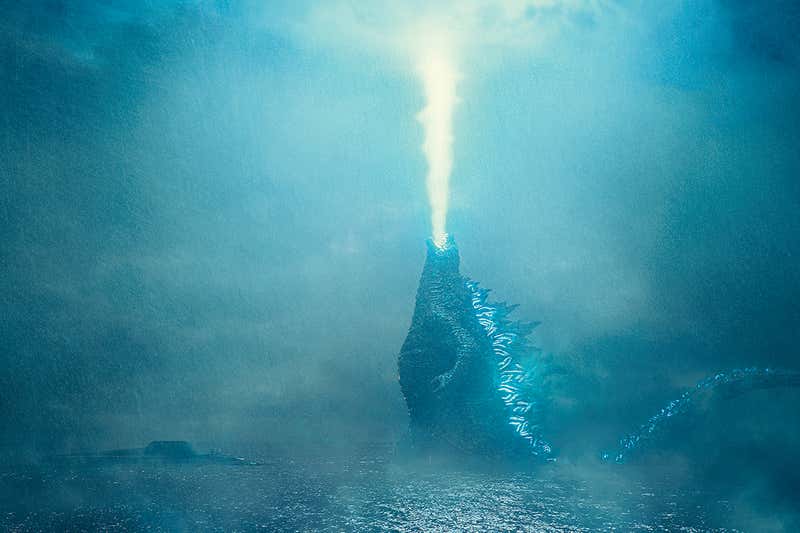
Pondering the science of Godzilla for New Scientist, 12 June 2019
FOR Japanese children, Godzilla is the ultimate scary adult: fierce, honourable, clumsy and a bit out of control. For their grandparents, he’s the irradiated embodiment of wartime tragedy, a bad memory come to life. For the rest of us, I suppose, he’s “just” a nuclear-powered dinosaur.
Godzilla is also a pay cheque. Films featuring the epic creature, almost all by the Japanese studio Toho, have been produced since 1954, a cinematic franchise record. The current release, Godzilla: King of the monsters, is the 35th, and the third to be produced entirely within the Hollywood system.
Its human stars play the shattered Russell family. Millie Bobby Brown from TV hit Stranger Things is Madison, whose brother Andrew was killed during a 2014 kaiju (monster) attack on San Francisco. Her dad Mark is literally living with wolves; her mum Emma prefers kaiju to people.
Terroristic eco-warriors are out to awaken Godzilla’s subterranean cousins in an effort to bring the planet “back into balance” – and Emma is inclined to help them. Newsreel images of ruined San Francisco make her point: in five short years it has turned to jungle, accelerated by ionising radiation spilling from Godzilla’s insides.
Why do movies, stretching back to the giant ants of Them!, assume that excess radiation promotes growth? The evidence has always pointed the other way. Ionising radiation weakens and breaks up DNA, damaging cells enough to kill them, or cause them to mutate in ways that, somehow or other, lead to the grave. In humans, epidemiological studies show that even low doses of radiation increase the risk of cancer.
Still, human nature being what it is, whenever a new kind of ray is detected, we speculate about its magical properties. Radium, a radioactive metal, was discovered by Marie and Pierre Curie in 1898, and though it eventually killed her, it still found its way into the food chain thanks to products like Hippman-Blach bakery’s Radium Bread (made with radium-laced water, which was supposed to cure everything from arthritis to impotence to wrinkles).
Is there more to this accelerated-growth idea than magical thinking? “Hormesis” is the controversial notion that things that are dangerous in high doses might be beneficial to human health at lower levels. Some lab studies have shown the effect in action. Whether there is radiation hormesis, however, is a big question – and a timely one.
China’s space programme has studied the ability of plants to develop and thrive in conditions of microgravity and exposure to cosmic radiation in space. Since 1987, 66 mutant varieties have been cultivated through its space-breeding efforts.
So far, so workaday: “atomic gardening” has been around since the 1950s, exposing plants to radioactive sources (typically cobalt-60) to generate mutations, and over 2000 new varieties of agriculturally useful plants have been created this way.
The Chinese results, however, are a bit weird. Plants positively mutated during space flight have grown faster than their irradiated Earth-grown counterparts. Space-bred mutations do better than their “atomically gardened” controls, and no one is sure why.
Is there something magical about cosmic rays? Probably not, though if I were Godzilla (traditionally Earth’s first line of defence against alien attack) I would watch my back.
